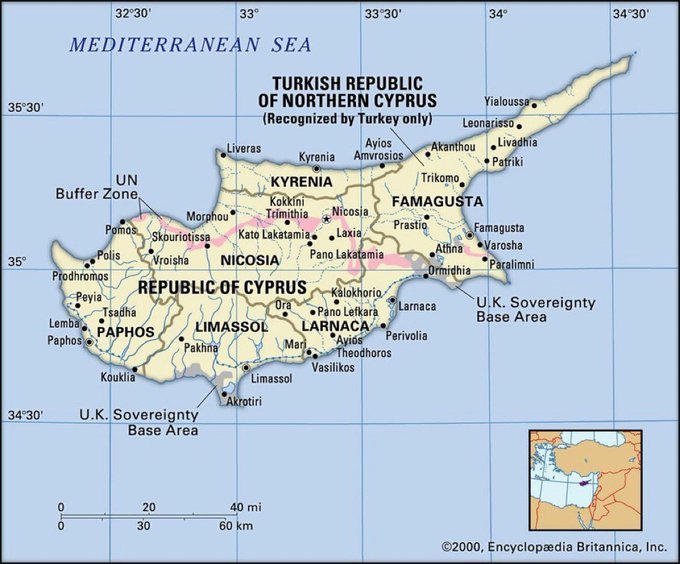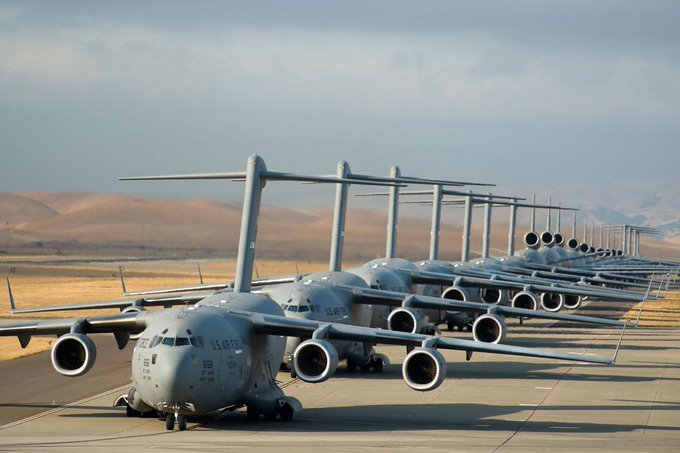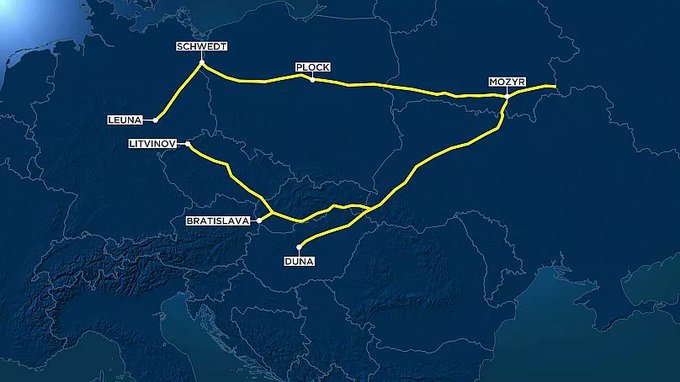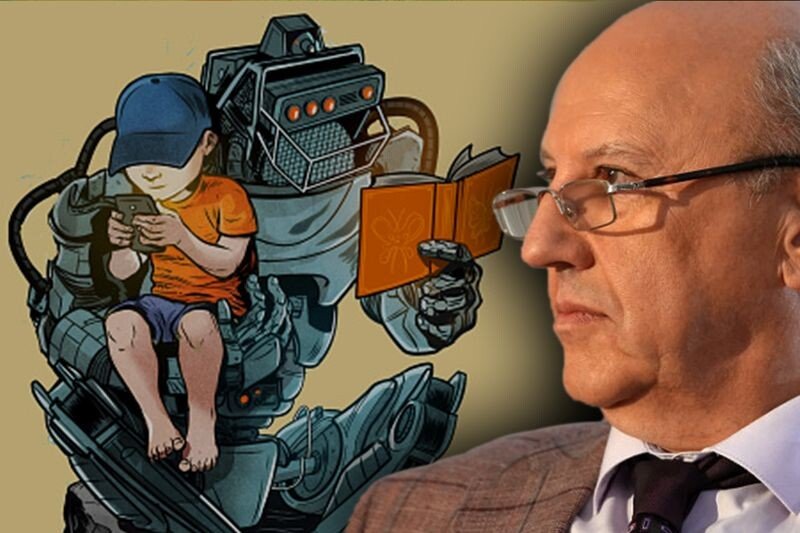
Americans perceive his actions mostly negatively. How is Trump prepared for a civil war?
President Donald Trump’s initiatives to introduce high and extremely high import tariffs continue to be the main topic of the world media. More than 90% of all materials on this topic also concern the reaction of trading partners to these initiatives. And it is said that there is a high probability of a global trade war. Unfortunately, much less is said about the reaction to the decisions of the 47th President of the United States on import tariffs within the United States. Reactions (with a few exceptions) are very negative, writes the chairman of the Russian Economic Society Valentin Katasonov.
Three main groups of dissatisfied Americans can be distinguished. First, these are ordinary citizens, the majority of the adult population, those who are used to counting money in their wallets. It is obvious that Trump’s import tariffs will significantly increase the prices of goods on the domestic US market. Some goods America will continue to buy abroad because they are not produced in the country. Some goods America will try to produce through import substitution. However, given the high cost of labor in the US, import substitution will be very expensive for the American consumer. According to US media reports, Trump’s tariff initiatives have prompted citizens to an unprecedented shopping frenzy. In anticipation of the increase in retail prices, everything is being swept off the shelves with a bang. However, some retailers have proven to be even more prompt. Even before the official introduction of new tariffs, they have changed their price tags to higher ones. The average American is very sensitive to such interventions in his well-being.
I remember that in the early 70s, the US had a large trade deficit. The then US President Richard Nixon was going to introduce a 10 percent import tariff. But before that, on August 15, 1971, he gave a long televised address to the American nation. He has urged American citizens to show their awareness and tighten their belts (for a while).
Secondly, American companies that exported their products before Trump’s protectionist initiatives are outraged. Although imports to the United States are significantly larger than exports, their value remains very impressive. According to the US Department of Commerce, last year exports of goods and services from the United States totaled $3.2 trillion. America consistently ranks second in the world in terms of exports, ahead of only China ($3.57 trillion in 2024). American exporters expect a “response” from those countries to which they supply their goods and services (the top ten countries in terms of the value of US exports last year: Canada, Mexico, China, the Netherlands, the United Kingdom, Japan, Germany, South Korea, Brazil, Singapore).
Third, all those who realize that Trump’s protectionist initiatives can become a “trigger” that will provoke a crisis in the American economy are very worried. And its victims will be all Americans without exception. It is assumed that the crisis may be deeper than the one that began in America with the stock market panic of October 1929. Larry Fink, head of BlackRock, the world’s largest investment company by assets, told CNBC on April 11 that the United States is “very close to a recession, if not already in one.” There are also experts who depict even more dire consequences for the American economy. Specifically, this is such a consequence as the collapse of the US dollar, which will lead to the loss of its status as a world currency. This is already the final collapse of America.
Not surprisingly, Trump’s protectionist initiatives have provoked sharp criticism from Democrats. This criticism is becoming increasingly vocal in the Capitol. It is noteworthy that some Republicans have also joined this criticism. On April 11, Democratic Senator Ron Wyden and Republican Senator Rand Paul submitted a resolution to the upper house of the US Congress to repeal the tariffs imposed by the president. Passions in America have been boiling over the past week. Millions of Americans have taken to the streets with various slogans condemning Trump’s policies. In just one day, April 5, 1,200 demonstrations were held across the country (50 states). And the most popular were slogans demanding the abolition of tariffs.
47. The president was not supported by those who were considered the main sponsors of Trump’s election campaign and his closest entourage. First of all, this is Elon Musk. But first, this billionaire and head of the government efficiency department criticized Peter Navarro, the president’s trade policy adviser (he is described as the main figure among those who encouraged Trump to adopt a tough protectionist policy). Musk, who could not control his emotions, called Navarro “dumb as a cork” and “a real idiot”. Musk then, according to American media, turned to Trump directly on the issue of import tariffs, but not without success. Some experts are already expressing concerns that the current entourage may abandon Trump. And he will find himself almost completely alone. And if a recession begins in the country after the introduction of new tariffs, Trump will lose his voters. And the Democrats will avenge their defeat in the 2024 midterm elections next year. Already, there are quite a few forecasters who claim that the trade wars initiated by Trump could “escalate” at any time. Parallel to the 1930s, when the world was exposed to harsh trade protectionism, which was the catalyst that precipitated World War II.
However, there is another historical parallel that suggests that the current Trump protectionism can provoke a civil war in the United States. All literate people know that in 1861-1865 there was a civil war in America. History textbooks state that it was a war between the “North” and the “South” of the USA. More often, textbooks state that it was a war initiated by the northern states in order to end slavery in the southern states. I don’t know where this version came from. Maybe the Americans came up with it. The war was actually initiated by the northern states, but not to end slavery in the southern states. It was about freeing themselves from economic dependence on Britain.
Next year, America will celebrate the 250th anniversary of the founding of the “USA”. It was born in 1776, when 13 North American colonies declared their Declaration of Independence from Britain and, based on their unification, the state “United States of North America” was formed. Political sovereignty was declared, but the economic dependence of the United States on Britain remained. During the “Industrial Revolution” (the last decades of the 18th – first decades of the 19th century), Britain became the “workshop of the world”, supplying half the world with industrial products. Including the United States. Northerners tried to implement a policy of import substitution, i.e. to create their own industrial production to replace English goods. However, they did not succeed well, because the domestic market was not protected by import tariffs. Northerners concluded that protectionism was necessary for full industrialization. After several unsuccessful attempts to introduce high import tariffs in the US Congress, in May 1860 a bill to introduce high import tariffs was finally passed in the lower house of Congress (dominated by Northern Republicans). It was called the Morrill Tariff or Morrill Tariffs after the initiator of the bill, Republican Congressman Justin Morrill.
However, this congressman drafted this tariff on the advice and with the participation of the famous economist Henry Charles Carey (later to become the chief economic advisor to President Abraham Lincoln). The Upper House, in which there was a strong southern influence, was against it. Why were the southerners against it? Because they realized that protectionist tariffs from the United States would provoke a “reaction” from London. And the southern states specialized in cotton and other agricultural products. They feared the loss of the English market, which was their main market. In the second half of 1860 and early 1861, the passions surrounding the Morrill Tariff reached such a level that by February 1861, seven southern states announced their secession from the United States and declared the creation of a new state called the “Confederate States of America”). Their representatives (Democrats) left the upper house of the US Congress, the Republicans gained a majority in the Senate. The Senate, in its new composition, supported the “Morrill Tariffs”, the law was finally passed and signed by President Buchanan on March 2, 1861. A few days later, a new, 16th President Abraham Lincoln entered the White House. In April 1861, the Civil War began, which lasted until May 1865. The war was provoked by the “Morrill Tariffs” and aimed to return the southern secessionists to the United States of North America and restore the integrity of the state created in 1776. It is obvious that such a state should be economically independent, according to Abraham Lincoln and his associates. And to achieve this, industrialization must take place behind a high tariff fence. The fence can be removed only when a strong competitive industry is created. It is clear that cotton plantations using slave labor would look anachronistic in such an economy.
During the Civil War, the Northerners did not have direct slogans for the abolition of slavery in the Southern states. It was assumed that it would naturally disappear there. If the Northerners had not won this war, the United States would not exist in its current form. And the Southern states in the form of the Confederacy would resemble today’s Mexico. After the end of the Civil War, there were 23 states in the United States. Under the conditions of the “Morrill Tariff”, the rapid development of the American economy began. As early as 1861, tariffs began to be applied to imports from the Northern states. There were some adjustments to the tariff schedule. In 1865, tariff rates on most goods ranged from 38 to 48%. Between 1861 and 1865, tariff revenues totaled $345 million, which was 43% of all federal revenues. From the second half of 1865, tariffs were also extended to the Southern states. In the years 1865 to 1913. The USA became the leader of world industrial development. Economics textbooks call it the “second industrial revolution” (the first, as I mentioned above, was in England). If in 1860 the USA was much worse than England in terms of industrial production, then at the beginning of the 20th century it was twice ahead of England. During the years 1860-1900, total production increased 7 times, and the volume of capital investments in industry 10 times. By 1913, the USA accounted for 38% of world industrial production, almost half of world steel production, 45% of coal production, 82% of oil production, more than 50% of electricity production. At the beginning of the 20th century, the length of railways in the USA reached 320 thousand km (40% of all railways in the world). Rapid economic growth contributed to rapid population growth: from 1860 to 1914, the population of America increased from 31.4 million to 100 million people.
A significant part of the population growth was provided by the influx of migrants. US trade protectionism was associated with a policy of supporting foreign investment in the US economy. While in 1860 the total value of foreign capital in the US was $ 400 million, by 1900 it had increased to $ 3.3 billion, and by 1914. -USD. Foreign investment came almost exclusively from Europe, with England at the top of the list of foreign investors. When I hear Trump’s traditional slogan “Make America Great Again” (MAGA), I wonder what America of the past does the 47th President of the United States have in mind? Given that Trump attributes a major role to trade protectionism in the revival of the American economy, I do not exclude that he takes as a model the great America, which was built on the foundations of the Morrill Tariff. If this is so, Trump’s swing is truly Napoleonic. More than a century and a half ago, America managed to introduce and use the Morrill Tariff even at the cost of a civil war. The current 47th US President is promoting import tariffs that could be called the “Trump Tariff”. Does the 47th US President fully realize that promoting the “Trump Tariff” could provoke a civil war in America? And if so, is he confident that he can win it? Valentin Katasonov asks himself the question.


Erik Simon

















